
Hello everyone and welcome back!
In case you are currently reading this entry, but have not read the last one in which I explained my original lesson plan following the Multimodal approach, I advise you to go back and read the entry Designing and Planning a Multimodal Lesson before you continue reading this one. On that entry, I explained not only the practical aspect of the lesson but also the theoretical side to it .
If you have read it already, then you are on the right entry. Today, I will share with you how I modified the original lesson in order to make it fit to the level of the students that completed it (considering that I ended up applying the lesson to younger students), but without changing the main objectives and ideas that I had originally set.
As you know, I designed a lesson around the picture book The Lion Who Wanted to Love; following the multiliteracies pedagogy approach that is comprised of four knowledge processes, which are the following: experiencing, conceptualizing, analyzing and applying. For this modified lesson plan, I tried to keep as intact as possible the processes to follow the same purpose and achieve the sam objectives.
Therefore, I decided to cut the follow-along lesson short and modify it in order to make it easier for the students to keep their focus and be able to complete the activities; instead of sending them the whole video, I sent them written activities, as well as the storytelling part of the video.


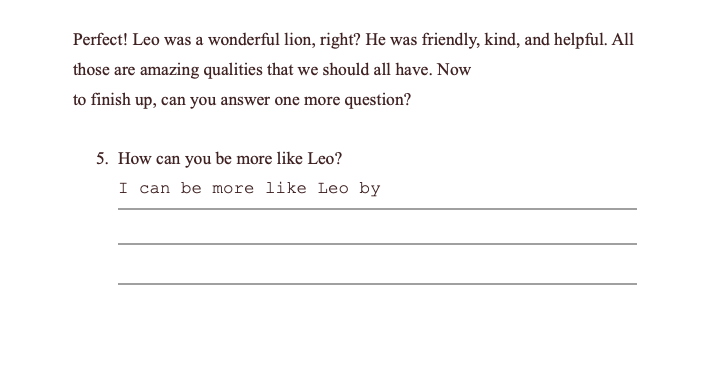
As you can see, for the experiencing process, I wrote down the introduction for the learners to get into the story and asked them to write down 3 comparative and 3 superlative sentences to describe lions. In fifth grade the students were working with these kinds of sentences when I was with them and even completed an activity with wild animals in which they learned adjectives such as fast, fierce, strong… for this reason, I saw fitted to add an activity following the same dynamic.
Moreover, I asked the students to write down where they think the story might take place and added a hint, as well as an example.
For the conceptualizing process, I indicated the students to copy the link written down, watch the storytelling video, and continue with the following activities afterwards.
Then, to continue with the analyzing process, I asked them some questions about the picture book to reinforce the story and the main idea displayed on it. I included the last dialogue, which holds the main idea and moral of the picture book for them to reflect on it.
Lastly came the applying process. I, once again, shortened this section and asked the students a single question: «How can you be more like Leo?»
Since I could not teach this lesson to 6th grade, I cannot examine and reflect on Noah’s and Mateo’s work. All the same, I wanted to share with you some of the answers that caught my attention the most and that showed me that the students were able to understand the story and activities.

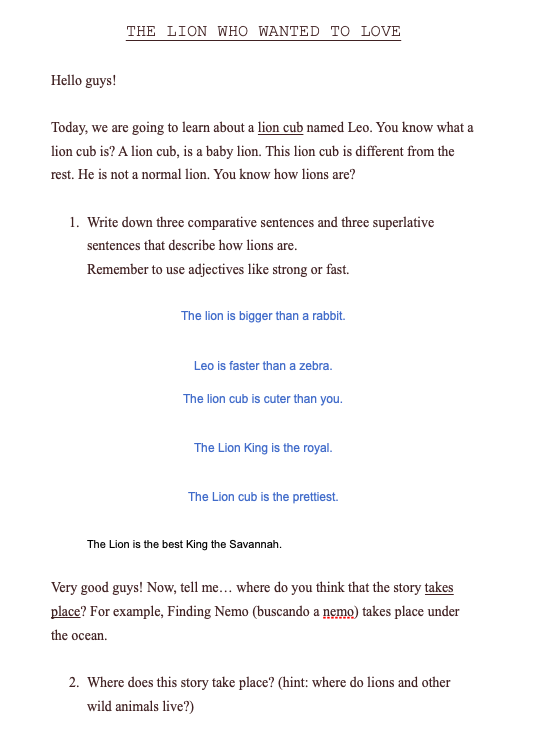
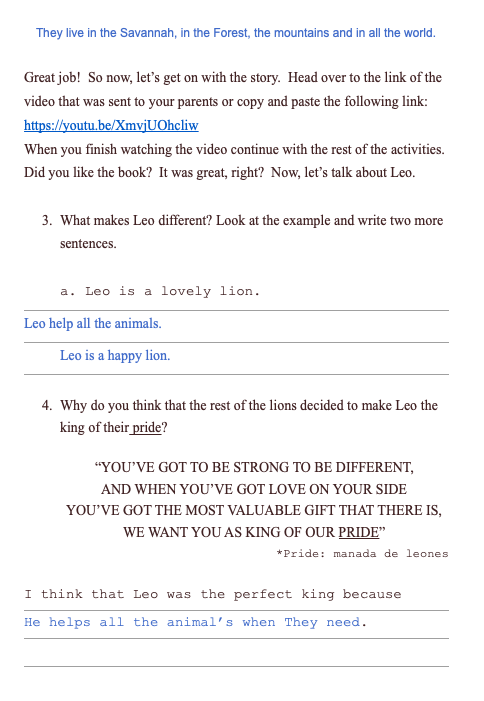
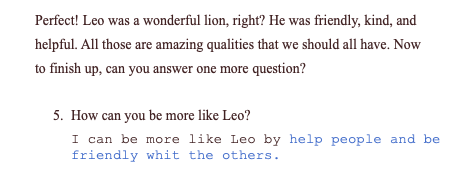
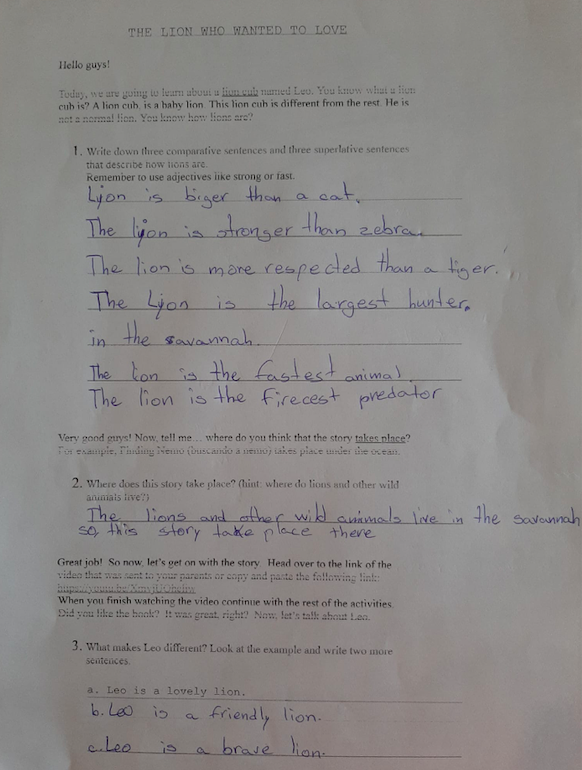
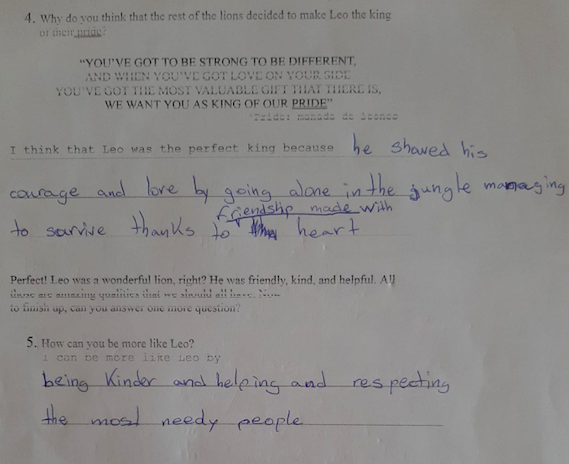
As I expected, in the first exercise the students used the adjectives fierce, fast and strong to describe lions. Nevertheless, some students also created sentences using adjectives such as cute, royal and pretty to describe lion cubs and Leo; as well as respected or large to describe lions as hunters, which really stood out to me.
Another detail that I wanted to highlight was how every student was able to recognize and understand that Leo was a helpful and kind lion who wanted to be there for the other animals. I especially like how in the fourth question, the first student describes Leo as pleasant and «not bad», which makes him braver and fiercer than the rest of the lions and consequently, the perfect king; moreover, the third student considers that Leo was the perfect king because he showed courage when he was kicked out of his pride and was able to survive with the friendships he made.
Lastly, on the last question, it seems like all the students believe that in order to be more like Leo it is necessary to help others more and be kinder, which is one of the answers that I was looking for.
I am very happy that even if it wasn’t as I had originally planned, it was still possible for me to send out the lesson for the children to complete and work with from their homes and get back the results.
Of course, it was impossible for me to help the students get to where I wanted them to be in the story and to ask them deeper questions to make them think more critically. Still, it seems like the students were able to understand the story and the questions that I asked them which was ideal and necessary for the lesson to work.
I hope that you enjoyed this entry! Feel free to leave me any comment and feedback, I appreciate them all.
Best regards,
Mariana.
Mariana, there is no doubt that this work is giving you the opportunity to learn. In this case, you can see how challenging is to adapt the lessons and the pedagogy of multiliteracies into virtual teaching. Good effort and good thinking!! Keep it up!!
Me gustaMe gusta
Thank you so much! It has indeed been a challenging task and, just like you wrote, a great opportunity to grow and learn in order to always be prepared. I appreciate it.
Me gustaMe gusta